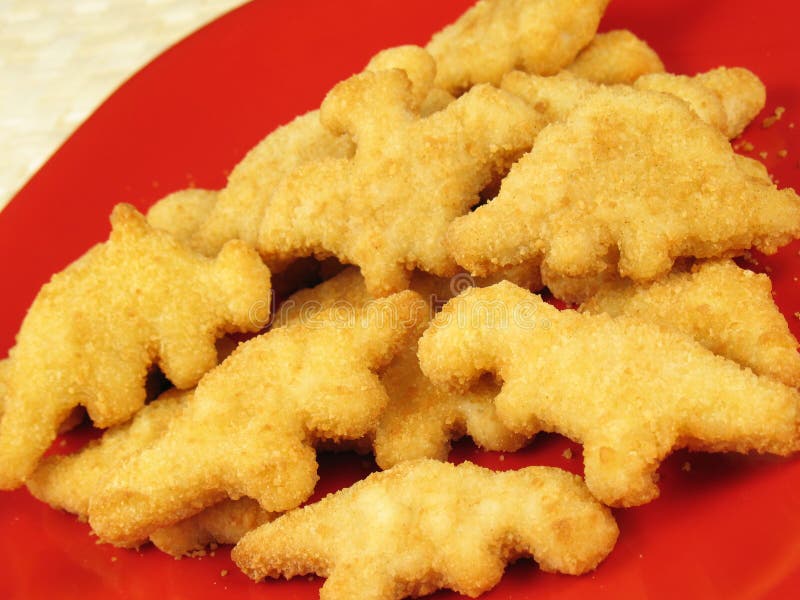

Finally, the nuggets are packaged, frozen and stored for shipping. The pieces are then fried in oil until the batter has set and the outside reaches the desired color. The pieces are battered and breaded in a large cylindrical drum that rotates, evenly coating all of the pieces in the desired spices and breading.


If used, this paste is then shaped before battering).
#Dino nuggets series
This is done either manually, or by a series of automatic blades, or by a process called grinding (a method of deboning in which the softer parts of the chicken carcass are forced through a mesh, leaving behind the more solid pieces, resulting in a meat paste. The chicken is cut and shaped to the correct size. The processing required for making chicken nuggets begins with deboning. The authors concluded that "Chicken nuggets are mostly fat, and their name is a misnomer." Manufacturingįast food Chicken McNuggets from McDonald's Other components included epithelial tissue, bone, nervous tissue and connective tissue. It found that less than half of the material was skeletal muscle, with fat occurring in an equal or greater proportion. A study published in the American Journal of Medicine analyzed the composition of chicken nuggets from two American fast food chains. Nutritional informationĬhicken nuggets are generally regarded as a fatty, unhealthy food. Baker's innovations solved these problems and made it possible to form chicken nuggets in any shape by first coating the meat in vinegar, salt, grains, and milk powder to make it hold together and then using an egg and grain based batter that could be fried as well as frozen.
#Dino nuggets skin
Two problems the meat industry was facing at the time were being able to clump ground meat without a skin and producing a batter coating that could be both deep fried and frozen without becoming detached. This bite-sized piece of chicken, coated in batter and then deep fried, was called the "Chicken Crispie" by Baker and his associates. Baker, a food science professor at Cornell University, and published as unpatented academic work. The chicken nugget was invented in the 1950s by Robert C.


 0 kommentar(er)
0 kommentar(er)
